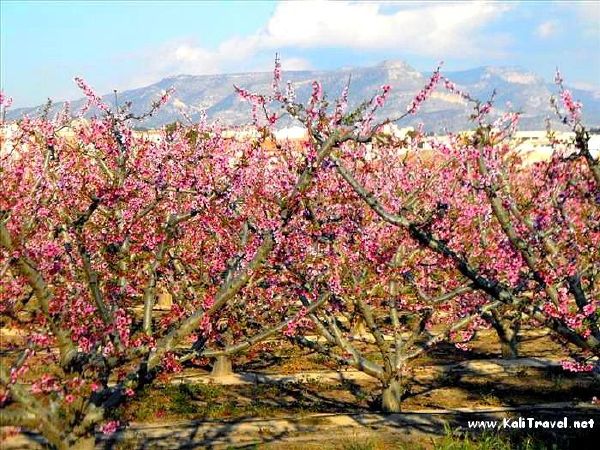Jumilla, Murcia Region, Spain.
Murcia is the next province down from the Costa Blanca in south east Spain. Bordering Alicante Province to the west and south, it’s a Region in its own right and name of the capital city. A beautiful stretch of Mediterranean coastland, inland towns of historic interest and picturesque rural landscapes, put it top of your wish-list of places to explore.
Jumilla is located inland in the far northeast corner of Murcia Province, a small lively city with an attractive historical centre, crowned by the emblematic castle and surrounded by agricultural land, mainly vineyards. This is what Jumilla is internationally renowned for, and why the name probably sounds familiar, it’s one of Spain’s great wine producing areas!
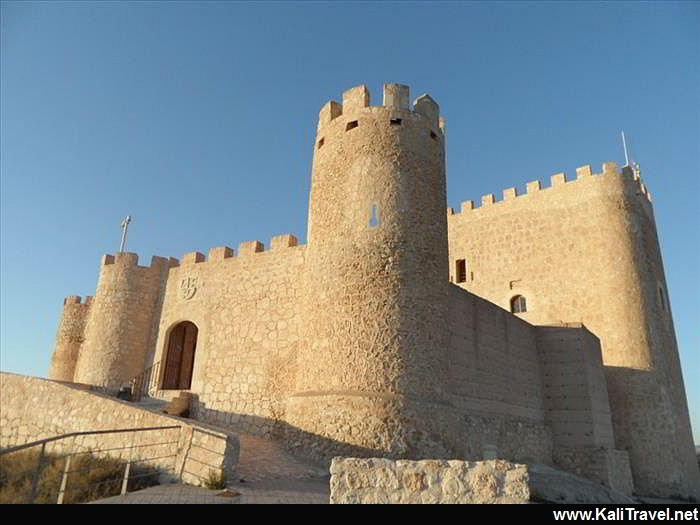
Famed for D.O. Jumilla red wine in particular, and the many bodegas in and around the city; the new generations at the mainly family-run wineries combine expert oenology with a centuries-old winemaking tradition, to produce new variations of reds, whites and rosés to please modern palates.
Vines, olives and cereals have been planted on these fertile lands since Iberians times, many centuries ago. The ancient Greeks followed in their footsteps, and went on to export wine to Greece. The local wine industry has steadily flourished since the Middle ages.
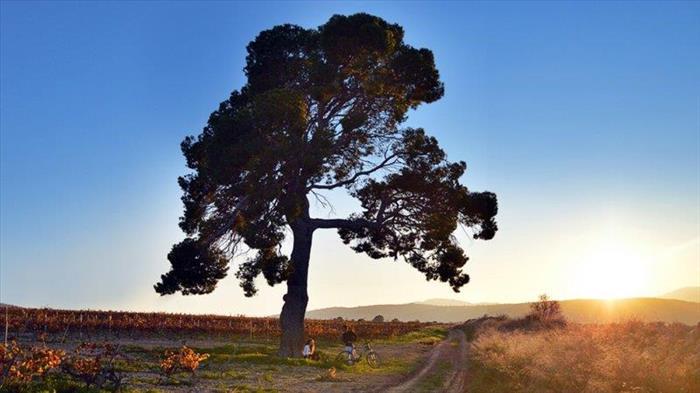
In 1950 the first automatic bottlers were installed and finally in 1966 Jumilla was awarded its very own distinction of ‘Denominación de Origen’. Interesting facts, but it’s even more fascinating to go along on a guided ‘wine tasting tour’ at one of the bodegas as I did recently! Book up in advance if you’d like to join an English-speaking group.
A small group of us met up in a local bodega’s wine shop and were shown the various installations, with interesting explanations on how the wine process works: from grape picking and crushing, through wine elaboration and aging, the casks, corks, bottling…
The ‘aromas’ room was fun because were taught how to recognise the different ‘notes’ such as ‘vanilla’, ‘red fruits’, green apple… there are dozens of different ones! Finally we were invited to ‘taste’ the wines in a professional way and put our newly gained experience at ’smelling’ wines to the test. All very educative and pleasant as we stood and sipped the excellent wines accompanied by local cheese and cold sausage!
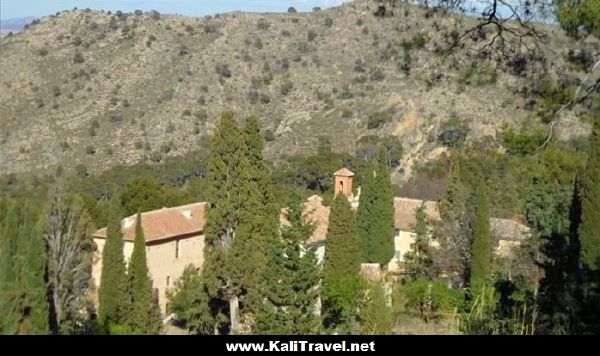
The Jumilla Wine Route is also a great way of learning the culture and traditions of a winemaking land – a stroll in the vineyards, a concert at the winery, an overnight stay at a rural hotel, enjoy the local cuisine, walk through the old town centre to see the monuments, climb up to the castle, drive into the pine-clad hillside to see the ancient Santa Ana Convent (1573) where there are shady picnic areas, natural springs and fabulous views.
The August Wine Harvest Festival is the highlight of the year, starting in June when the ‘child of the grapes’ holy statue is carried down from the convent in a procession to the Plaza de la Constitución, where the image remains until the festive pilgrimage to take it back the first Sunday in September.
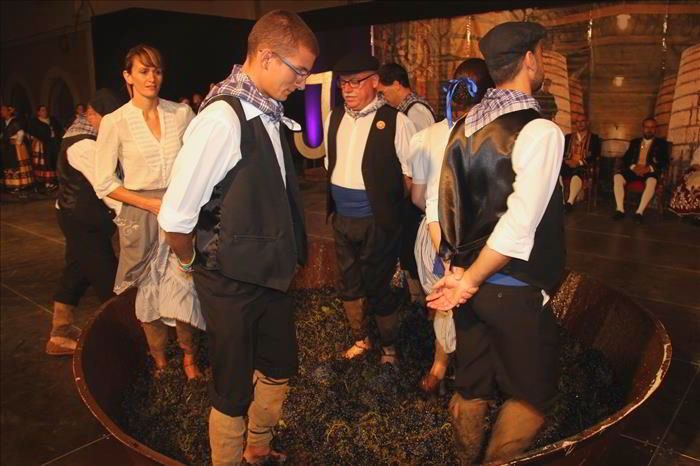
Not-to-be-missed attractions include the wine fountain in Rey Don Pedro Gardens, grape offerings and grape treading, the popular wine parade through the streets where an amazing 70,000 litres of wine is ‘poured’, and a full programme of fiesta activities taking place around the middle of August… Jumilla Wine Harvesting Day, the ‘Folklore Festival’ and Moors & Christians Fiesta.
Other dates to put in your dairy: International Enotourism Day on November 9, an open day at Jumilla Wineries; Jumilla’s traditional Easter Festivities which are among the best in Spain.
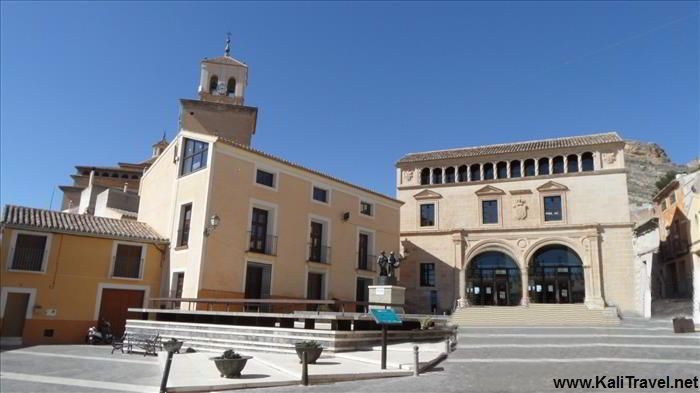
The best way to get to know Jumilla is to walk through the streets of the historic centre, the pretty plazas and shady parks. The lively old town is filled with appetising restaurants and tapas bars, and remarkable buildings such as Teatro Vico, a XIX century theatre with an impressively ornate white facade, located on one of the central streets, Calle Cánovas del Castillo, where you’ll also find the intriguing Casa Modernista, the Town Hall and Plaza de la Constitución.
Stroll through the maze of adjoining side streets, lined with elegant traditional townhouses, and you’ll come across a wealth of ancient architectural treasures…
XVIII century El Salvador church XVIII is a work-of-art in typical baroque style.
Built in 1570, San Agustín chapel was restored in 1950 and the characteristic blue and white tiles (colours of Jumilla flag) were added to the domes.
Palacio Del Antiguo Concejo was originally a XVI century palace which currently houses the archaeological section of the municipal museum.
The magnificent Santiago Church is a wonderful example of clerical architecture dating to XV. An emblem of Jumilla, it makes an impressive setting for a wedding.
El Casón is an extraordinary V century funeral chamber and national monument.
Beautifully preserved Jumilla castle watches over the town; it’s well worth the trek up Camino Castillo, to experience a feeling of timeless history and for the panoramic views. Originally a Bronze Age fortification, the site held a commanding position for subsequent civilizations that passed this way…in the iron age, Iberians constructed a fortified settlement.
Roman legions marched through these lands and erected the city walls which can still be seen in part today. In 713 the Moorish troops arrived and built their fort and mosque over the Roman ruins. The Spanish Kingdom of Castille conquered the castle in 1241 and finally, in 1461 the Marquess of Villena built the three-tier castle as we know it today. Check with tourist info to see opening times.
How to get to Jumilla
Nearest airports: Alicante-Elche (91.4 km); San Javier, Murcia (116 km).
Getting there by car:
From Murcia city: A-30 & A-33 (46 min – 70.3 km).
From Alicante city: A-31 & CV-83 (1 h 12 min – 90.2 km).
From Valencia city: A-7 & N-344 (1 h 55 min – 159 km).
Related Posts on Jumilla and Murcia
Wine Harvesting Festival in Jumilla
August Wine Harvesting Festival in Jumilla (Murcia). The Traditional Wine Fair, National Folklore Festival, and Moors & Christians Festivities take place in the historical city of Jumilla – grape treading, wine making and tastings, colourful parades and processions, shows and performances. Don’t miss this amazing festival!
Ricote Valley – Waterwheels, Spa & Peach Blossom in Murcia
The Ricote Valley is an authentic paradise in Murcia Province (Spain).
Waterwheels on the riverbank, orchards with fruit trees in blossom, and a hotspring spa.
Discover the World with![]() the blog with a focus on independent travel
the blog with a focus on independent travel




